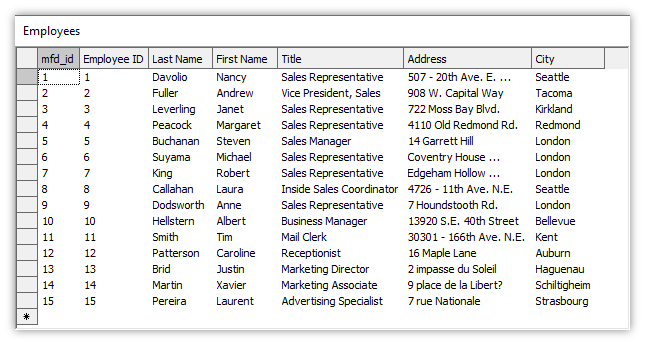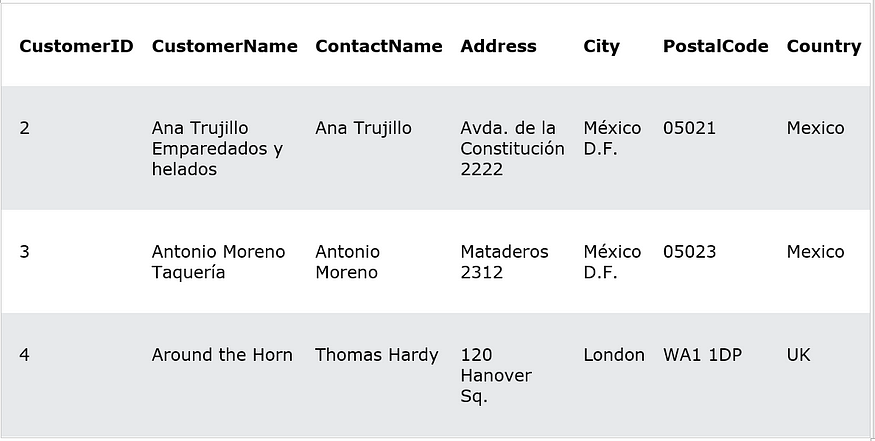MySQL Aliases

Aliases are used to give a table, or a column in a table, a temporary name.
Aliases are often used to make column names more readable.
An alias only exists for the duration of that query.
An alias is created with the AS keyword.
Alias Column Syntax
SELECT column_name AS alias_name
FROM table_name;Alias Table Syntax
SELECT column_name(s)
FROM table_name AS alias_name;Demo Database
In this tutorial we will use the well-known Employees sample database.
Below is a selection from the “Employees” table:

Alias for Columns Examples
The following SQL statement creates two aliases, one for the EmployeeID column and one for the LastName column:
Example
SELECT EmployeeID AS ID, LastName AS Name
FROM Employees;The following SQL statement creates two aliases, one for the LastName column and one for the FirstName column.
Note: Single or double quotation marks are required if the alias name contains spaces:
Example
SELECT LastName AS LName, FirstName AS "F Name"
FROM Employees;The following SQL statement creates an alias named “Address” that combine two columns (Address, City):
Example
SELECT LastName, CONCAT_WS(', ', Address,City) AS Address
FROM Employees;Alias for Tables Example
The following SQL statement selects all the orders from the customer with CustomerID=4 (Around the Horn). We use the “Customers” and “Orders” tables, and give them the table aliases of “c” and “o” respectively (Here we use aliases to make the SQL shorter):


Example
SELECT o.OrderID, o.OrderDate, c.CustomerName
FROM Customers AS c, Orders AS o
WHERE c.CustomerName='Around the Horn' AND c.CustomerID=o.CustomerID;The following SQL statement is the same as above, but without aliases:
Example
SELECT Orders.OrderID, Orders.OrderDate, Customers.CustomerName
FROM Customers, Orders
WHERE Customers.CustomerName='Around the Horn' AND Customers.CustomerID=Orders.CustomerID;Aliases can be useful when:
- There are more than one table involved in a query
- Functions are used in the query
- Column names are big or not very readable
- Two or more columns are combined together

No comments:
Post a Comment